Digital Poster
Putting Heart into Advancing Quantitative Imaging
ISMRM & ISMRT Annual Meeting & Exhibition • 10-15 May 2025 • Honolulu, Hawai'i

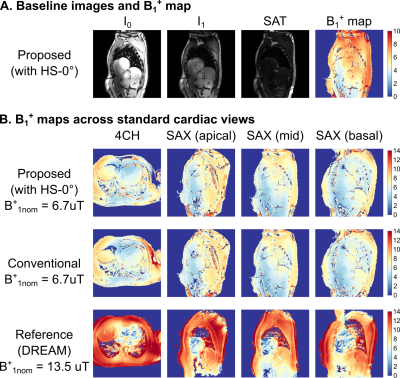 |
Computer Number: 1
1817. Relaxation
compensation in preparation-based cardiac B1+ mapping
H. Post, M. Božić-Iven, P. Šiurytė, Y. Zhang, C. Coletti, A.
Cernicanu, C. van de Steeg Henzen, Q. Tao, S. Weingärtner
TU Delft, Delft, Netherlands
Impact: Confounder-corrected preparation-based B1+
mapping enables robust B1+ map quality in the human heart.
Confounder correction can help to further reduce bias, which
may be particularly important for assessing B1+ trends
across tissue boundaries with different T1rho times.
|
|
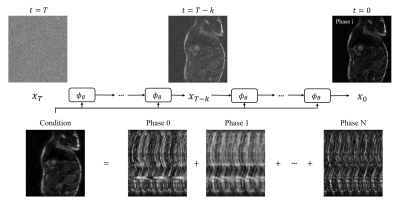 |
Computer Number: 2
1818. Conditional
Diffusion Model with K-space Guidance for Highly-Accelerated
Cardiac Cine MRI Reconstruction
H. Shi, X. Tang, L. Xu, Y. Zhao, Q. Liu, Y. Zhou, Q. Liu, J.
Xu, C. Zhu, H. Li
University of Washington, Seattle, United States
Impact: A new framework with diffusion models is
proposed for cardiac cine reconstruction. It utilizes
high-quality reconstruction of generative models and
provides reliable results by data consistency control. The
method is applicable to other dynamic MRI reconstructions in
highly undersampled scenarios.
|
|
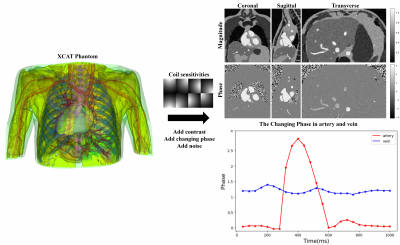 |
Computer Number: 3
1819. Comparison
of reconstruction methods of highly accelerated 3D dynamic
cardiovascular MRI using the 4D XCAT phantom

Y. Ren, Z. Zhou, P. Hu
ShanghaiTech University, Shanghai, China
Impact: A numerical phantom has been provided, along
with the implementation and comparison of three different
reconstruction methods. The code is available at
https://github.com/AssociatedPrimeIdeal/MRI_TorchRecon
|
|
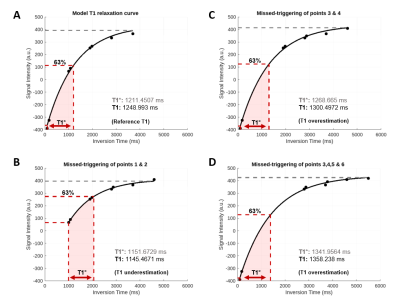 |
Computer Number: 4
1820. The
effect of electrocardiogram missed-triggering on T1 measurements
in cardiac MRI
K. Rehakova, P. Gatehouse, A. Scott, M. Usman
Imperial College London, London, United Kingdom
Impact: The robustness of MOLLI 5(3)3 cardiac T1 mapping
in the presence of ECG missed-triggering events at normal
heart rates has been investigated, allowing clinicians to
gain an insight into its diagnostic value, where ECG is not
reliable due to missed-triggering.
|
|
 |
Computer Number: 5
1821. 4D
cardiac QSM acquisition and reconstruction of Free-Breathing ECG
Gated Data: Initial Feasibility
G. Baskar, M. Thein, J. Smink, N. Hibino, M. Prince, Y.
Wang, A. Dimov, K. Kawaji
Illinois Institute of Technology, Chicago, United States
Impact: This study establishes initial feasibility for a
4D free-breathing QSM approach in cardiac imaging,
overcoming artifacts due of air-tissue interfaces and
demonstrating robustness in mapping across cardiac phases.
|
|
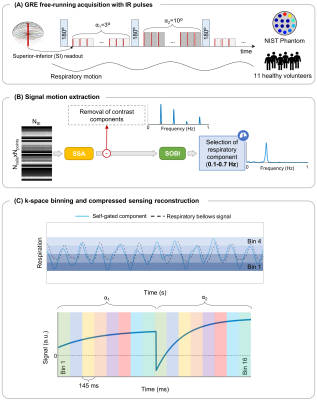 |
Computer Number: 6
1822. Self-gated
respiratory-resolved 4D T1 mapping of the carotid vessel wall
with B1+ correction
I. Montón Quesada, P. Calarnou, J-B Ledoux, J. Yerly, M.
Stuber, A. Ogier, R. van Heeswijk
Department of Radiology, Lausanne University Hospital (CHUV) and University of Lausanne (UNIL), Lausanne, Switzerland
Impact: End-expiratory T1 mapping
generated with a respiratory-resolved free-running framework
using inversion pulses and an interleaved double flip angle
technique reduces T1 overestimation
in the carotid vessel wall and offers improved intersubject
variability compared to single flip angle and MOLLI maps.
|
|
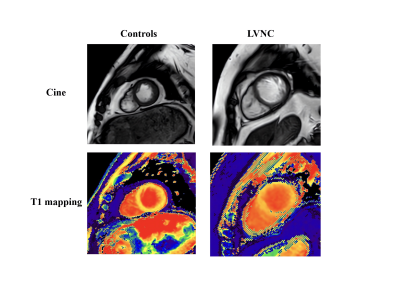 |
Computer Number: 7
1823. Early
Detection of Asymptomatic LVNC: Diagnostic Utility of
Non-Contrast T1 Mapping in Routine Screening
R. Zhang, Y. Hao, Y. Zhu
The First Affiliated Hospital of Xi’an Jiaotong University, Xi'an, China
Impact: Non-contrast T1 mapping effectively detects
early myocardial abnormalities in asymptomatic LVNC,
allowing precise, routine screening and facilitating early
intervention without the need for contrast agents.
|
|
 |
Computer Number: 8
1824. Phase
unwrapping 4D flow MRI by iterative graph cuts
M. Liljeblad, S. Qazi, T. Bianchessi, P. Dyverfeldt, J.
Berglund
Uppsala University Hospital, Uppsala, Sweden
Impact: The proposed method shows promise for phase
unwrapping 4D flow MRI, extending the dynamic range of 4D
flow MRI and reduces the need for multi-VENC acquisitions in
clinical cardiac MRI.
|
|
 |
Computer Number: 9
1825. Camera-based
Cardiac Triggering in Functional Cardiac MR
S. Weiss, J-H Wuelbern, J. Sénégas, C. Stehning, K. Blom, A.
Kok, C. Possanzini, J. Smink, R. Springorum, P. Ramamurthy
Philips Innovative Technologies, Hamburg, Germany
Impact: The presented work provides evidence that flow
quantification and T1 mapping is feasible with contactless
cardiac cycle detection. The proposed method allows cardiac
MRI without placement of ECG electrodes, thus increasing
accessibility of cardiac MR.
|
|
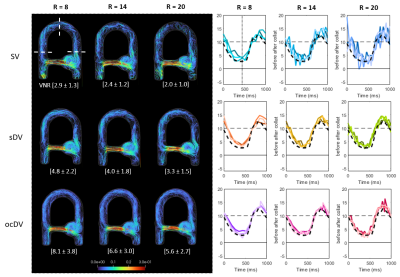 |
Computer Number: 10
1826. Optimal
Dual-VENC with 3D radial sampling for improved quantification in
4D Flow MRI: An in vitro validation study
M. Beghella, D. Garcia, F. Nicoud, D. Chechin, L. Boussel,
P. Douek, S. Boccalini, M. Sigovan
University of Lyon, CNRS, CREATIS Laboratory, Lyon, France
Impact: Improved velocity quantification of fast
arterial and slow venous flows in the same imaging volume
with significantly shorter acquisition times may be
achievable with 3D radial sampling and optimal combination
dual-VENC 4D Flow MRI in patients.
|
|
 |
Computer Number: 11
1827. Optimizing
Imaging Quality for Quantitative Multi-Contrast Atherosclerosis
Characterization (qMATCH): Transverse versus Coronal Imaging
Y-C Hsu, M. Lu, M. Keushkerian, K-L Nguyen, K. Johnson, M.
Altbach, H. Morris, K. Demarco, V. Deshpande, D. Mitsouras,
D. Saloner, S. McNally, S-E Kim, J. Roberts, R. Hadley, G.
Treiman, D. Parker, D. Li, Y. Xie
Cedars-Sinai Medical Center, Los Angeles, United States
Impact: The results provide an optimal imaging strategy
for using qMATCH in carotid atherosclerosis assessment. We
demonstrate a tailored approach by incorporating both
transverse and coronal acquisitions.
|
|
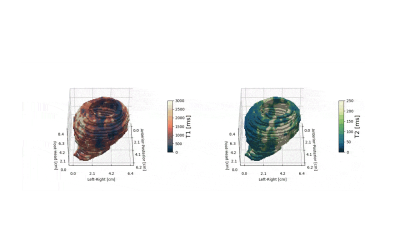 |
Computer Number: 12
1828. Simultaneous
3D T1- and T2-mapping of abdominal aortic aneurysms with black
blood and fat suppression
W. Stehling, E. Aalbregt, M. Wennen, E. Schrauben, P. van
Ooij, K. K. Yeung, A. Nederveen, O. Gurney-Champion
Radiology and Nuclear Medicine, Amsterdam University Medical Center, Amsterdam, Netherlands
Impact: An abdominal aortic aneurysm poses a risk of
rupture, leading to high mortality rates. The proposed
black-blood fat suppressed simultaneous T1- and T2-mapping
approach in AAAs may provide additional biomarkers to
estimate rupture risk.
|
|
 |
Computer Number: 13
1829. Accelerated
myocardial T1 mapping at low field
C. J. Mangama Sindzi, A. Tyler, K. Kunze, C. Rogers, A.
Neofytou, L. Huang, R. Razavi, A. Chiribiri, S. Roujol
King's College London, London, United Kingdom
Impact: Accelerated myocardial T1 mapping with improved
precision will reduce the duration of multi-slice myocardial
T1 mapping protocol and may provide increase spatial
coverage to existing protocol with limited slice coverage.
|
|
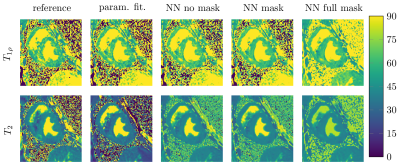 |
Computer Number: 14
1830. Residual
neural network simultaneous cardiac T1⍴ and T2 mapping using a
combined spin echo, spin lock pulse sequence
E. Gibbons, J. Mendes, E. DiBella
Weber State University, Ogden, United States
Impact: This method enhances cardiac imaging by enabling
simultaneous T1rho and T2 mapping in a single acquisition,
reducing scan time and improving accuracy. It provides more
consistent myocardial tissue characterization, potentially
aiding early diagnosis and treatment planning for heart
disease.
|
|
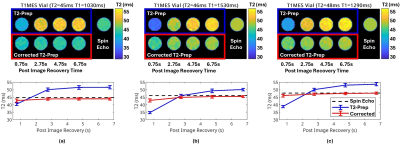 |
Computer Number: 15
1831. Efficient
Use of Acquisition Time in T2 and T1p Relaxation Maps
J. Mendes, N. Jacobs, E. Kwan, A. Arai, R. Ranjan, E.
DiBella
University of Utah, Salt Lake City, United States
Impact: The acquisition time of T2/T1p relaxation maps
can be reduced with shortened recovery times and single-shot
image readouts corrected with signal modeling.
Alternatively, the same method can be used to increase the
accuracy of relaxation maps without increased acquisition
time.
|
|
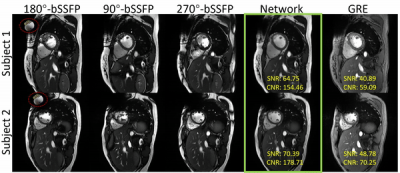 |
Computer Number: 16
1832. Enhancing
bSSFP cine imaging in cardiac device patients with twofold phase
cycling and cross-attention transformer network
Z. Chen, H. Chen, Y. Emu, J. Gao, X. Tang, J. Hu, W. Fan, C.
Hu
Shanghai Jiao Tong University, Shanghai, China
Impact: Our method considerably increases the
feasibility of bSSFP imaging in CIED patients at high
fields.
|
The International Society for Magnetic Resonance in Medicine is accredited by the Accreditation Council for Continuing Medical Education to provide continuing medical education for physicians.